Author: DefiOasis
Editor: Link, Geek Web3
Since the era of primates, social interaction has been an important part of human social life. For humans, who are social animals, the importance of social interaction is self-evident. In the age of the Internet, social scenes have gradually moved online, breaking through geographical limitations and transforming from familiar social interactions based on geography to interactions with strangers based on common interests. Various platforms serve as "public squares," allowing people who have never met to engage in entertainment, political discussions, economic activities, and other topics.
However, as Web2 social platforms gradually monopolize the market, the drawbacks of the Web2 social model have become increasingly apparent. From Reddit suppressing third-party app developers to Twitter breaking its long-standing "free" model, the flaws of social platforms under the monopoly of giants have been exposed without a doubt.
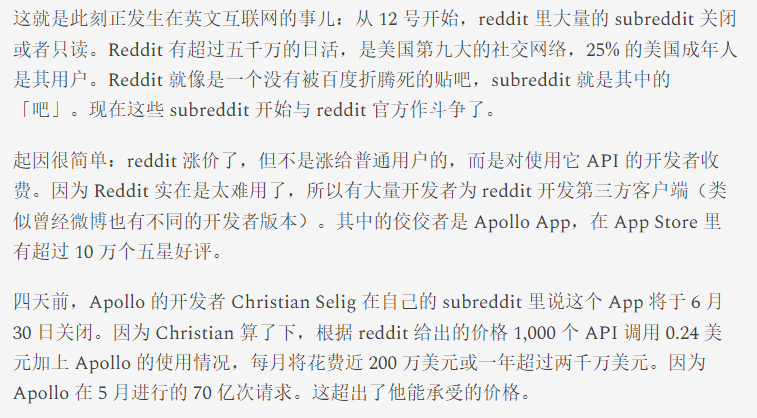 Image source: crypto4
Image source: crypto4
At the same time, Web3 social interaction has become a hot topic, with "decentralized social interaction" becoming one of the top 10 focus areas of the top institution Paradigm. Although Web3 social interaction cannot be considered a new narrative, in the current context of frequent data leaks, privacy scandals, and algorithmic biases on Web2 platforms, the characteristics of Web3 social interaction, such as decentralization, resistance to censorship, user-centricity, empowerment of digital assets, and identity interoperability, have gradually attracted more attention.
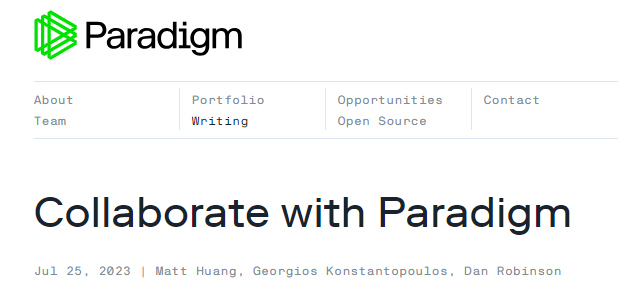
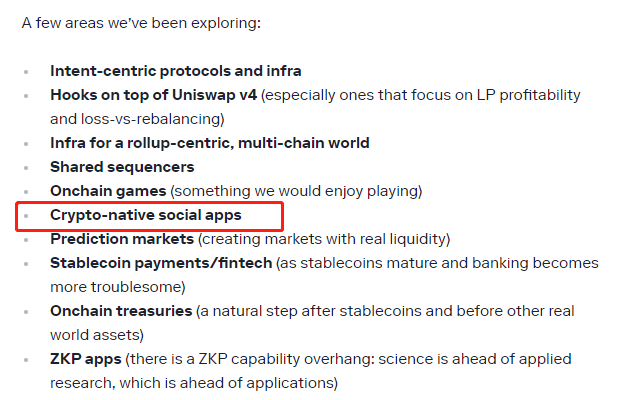
1. Current Status of Social Interaction
1.1 High Ceiling of the Social Interaction Track
Social products have enormous potential in the capital market. According to the "2022 Global Digital Overview" report, the global social media user base exceeds 4.62 billion, equivalent to 58.4% of the global population. Taking the leading company in the social track, Facebook, as an example, its peak market value exceeds $1 trillion, once ranking among the top ten listed companies globally.
According to Facebook's fourth-quarter 2022 financial report, the average daily active users (DAU) of Facebook's product series globally is nearly 3 billion, accounting for one-third of the global population. In addition, the valuations and market values of various social operating companies such as Twitter, Snapchat, and Weibo indicate a high ceiling for the social track. Given the small user base of Web3 social interaction at present, the growth space of the social track is obviously very large.
1.2 Continuous Growth of Global Social Media Users, but Slowing Growth Rate
Since the global popularization of Internet infrastructure, the number of social media users has shown rapid growth, especially during the Covid-19 period, when the adoption of social media was greatly accelerated.
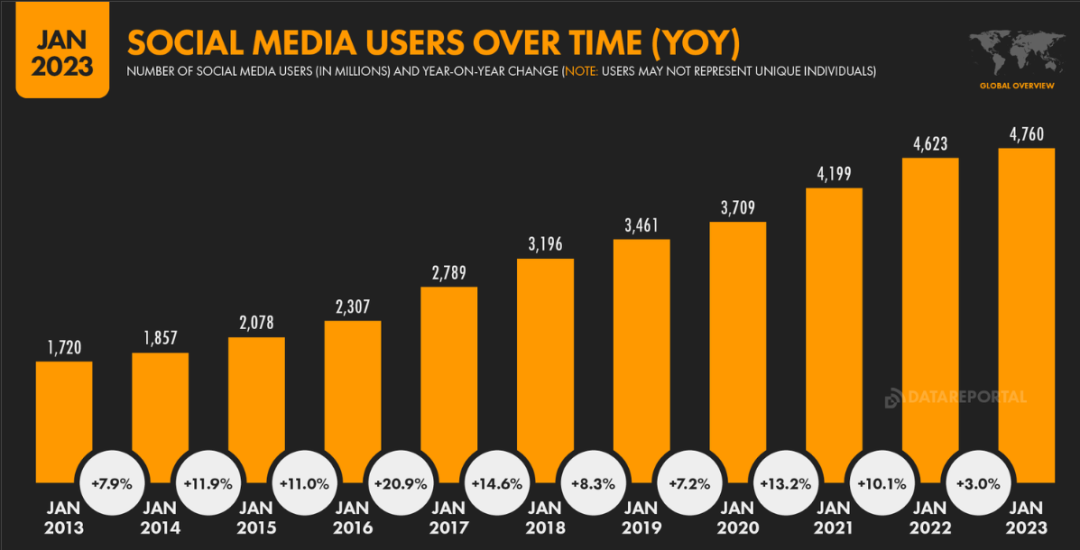 Image source: datareportal.com
Image source: datareportal.com
According to Kepios' data, the global social media user base has grown by nearly 30% in the past three years, with a net increase of over 1 billion people. However, as countries have lifted pandemic restrictions and relaxed population movement controls, social media adoption has slowed significantly as social interactions return to offline settings. In the context of weak growth in social media for Facebook, it is shifting its strategic direction towards the metaverse.
1.3 Current Issues with Web2 Social Platforms
Despite social software companies having clear information management regulations and laws in different countries or regions, there are still chaotic censorship, algorithmic biases, data abuse, and leaks. From Facebook's "electiongate" incident to Reddit's mandatory API fees that sparked backlash from developers, and Elon Musk's Twitter throttling to prevent addiction, these phenomena reflect that under the pursuit of profit, Web2 social software companies cannot prioritize users. User data can be utilized by large companies to create profiles of users, making it difficult for people to abstain from addiction to social software.
2. Value of Web3 Social Interaction
2.1 Redistribution of Value and Power
Since the advent of the Internet, social products have always revolved around the interests of three parties: users, platforms, and creators, which actually form an impossible triangle. In the Web2 social model, platforms are at the top of the food chain, but with the emergence of Web3 social interaction, the distribution of value/power among the three has changed.
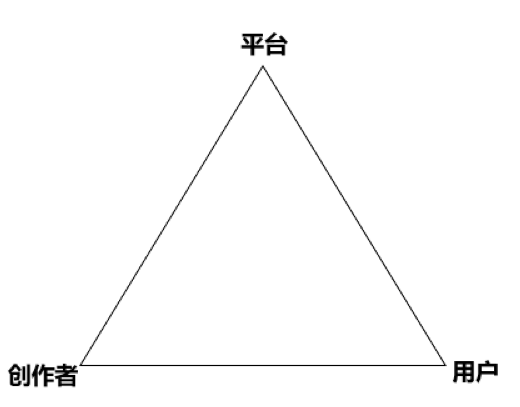
User Sovereignty: Web3 social interaction innovates the paradigm of social ownership, helping users reclaim sovereignty. By bringing user data onto the blockchain and decentralizing nodes to provide resistance to censorship, Web3 social interaction safeguards user sovereignty, including ownership of consumption and browsing preferences, privacy rights, sovereignty of digital assets, and identity.
In addition, in some Web3 products, users can also demonstrate their agency, such as jointly owning content works to receive royalties on Mirror, or holding some tokens on Chiliz to participate in club governance decisions.
Reshaping Creator Economics: In Web2 social products, platforms such as Weibo and Twitter will share platform revenue with creators, but there are generally high thresholds, low earnings, and a 20/80 income distribution. For example, in Twitter's recent content creator incentive program, creators must accumulate 5 million views on tweets over three months to qualify for revenue sharing, and they also need to subscribe to Twitter Blue.

However, driven by Web3 social products, content creators have become "true workers" and are no longer "alienated individuals." The Write To Earn model provided by Web3 platforms allows creators to monetize platform tokens based on quantifiable data such as the number of clicks and shares of their works, and also provides additional income channels for creators, as well as ensuring copyright protection through the traceability of Web3 records if creators mint NFTs while publishing content.
2.2 Decentralization of Governance Rights
Unlike traditional social media platforms that have absolute governance rights, in Web3, a considerable portion of governance rights is decentralized from the platform to the community. By entrusting content moderation and ownership to the community, the misuse of content moderation and editing rights due to capital manipulation or the concentration of power by the platform can be avoided. Users can allocate governance rights by holding NFTs or tokens, making decisions on suitable moderation processes or standards, resulting in a more democratic and transparent process.
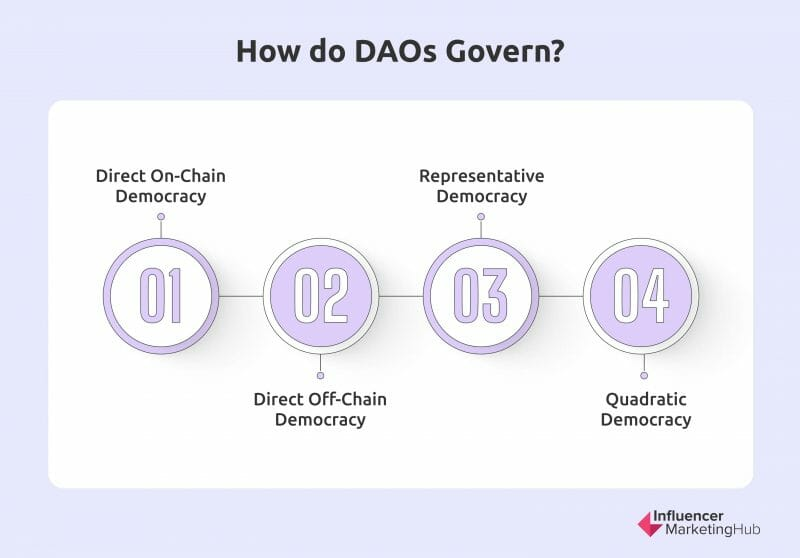
2.3 Decentralized Identity Interoperability
In traditional Internet social interaction, there are strong barriers to connecting identities between different products, and users seem to be in data silos, as the identity credentials of products under Tencent and Alibaba cannot be interoperable. Users need to continuously register and verify their identities in different ecosystems, making the lack of interoperability across multiple platforms a pain point of Web2 digital identities.
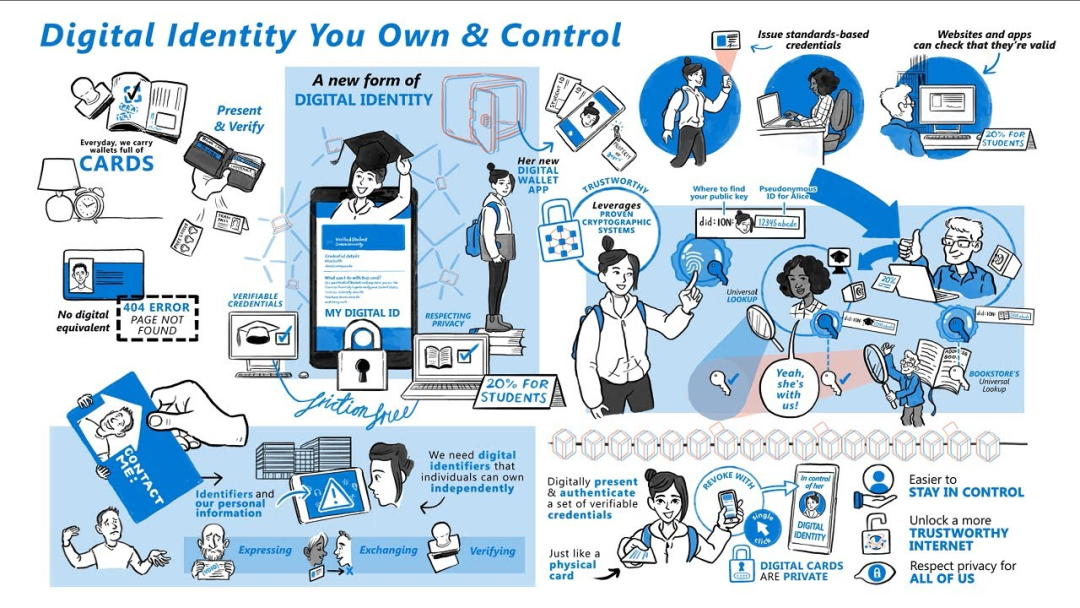
In the Web3 social interaction scene, only one digital identity is needed to experience a variety of scenarios in more open and interoperable protocols. For example, users can use the same ID identity in CyberConnect and Lens Protocol to experience various social behaviors such as video viewing, text and image social interaction, and instant messaging.
3. Brief Analysis of Web3 Social Platforms
Web3 social interaction is broadly defined and mainly refers to the Web3 technology and related social products. Due to space limitations, this article will categorize the Web3 social projects on the market into infrastructure and application categories, and briefly analyze them.
3.1 Infrastructure
Lens Protocol
Lens Protocol is a decentralized social graph built by the Aave team on the Polygon chain, with NFT as the core of interaction, and is one of the mainstream Web3 social protocols.
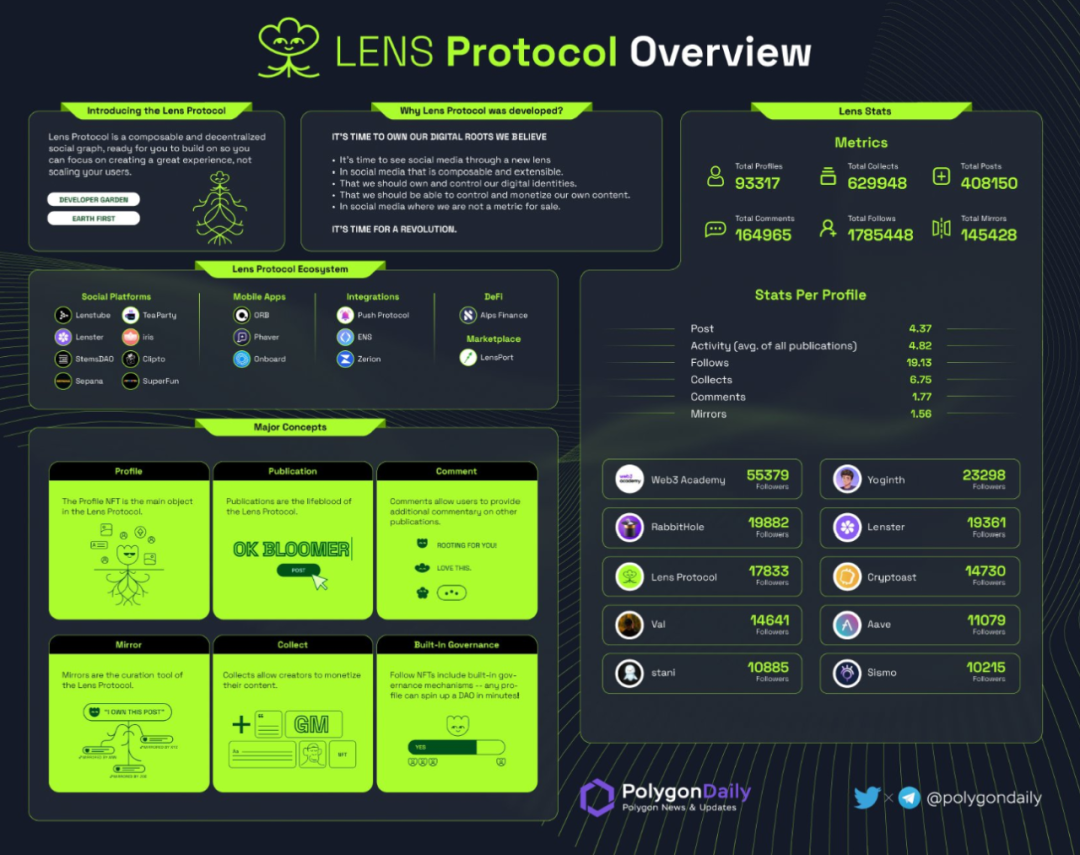
To participate in Lens, users will first create a personal profile NFT (Profile NFT), which is the main interactive object. Users holding Profile NFTs can engage in content creation, and all created content will be recorded on the Profile NFT and stored on the blockchain.
Interactions that Lens users can engage in include: creating and publishing content, collecting, and sharing. Among them, content publishing (Publication) is the core of Lens interaction, and content publishing can be divided into posting, commenting, and mirroring, with posting being the main function, and commenting and mirroring being additional functions. Creators can monetize their published content and also earn income on Lens through e-commerce, knowledge payment, and other forms.
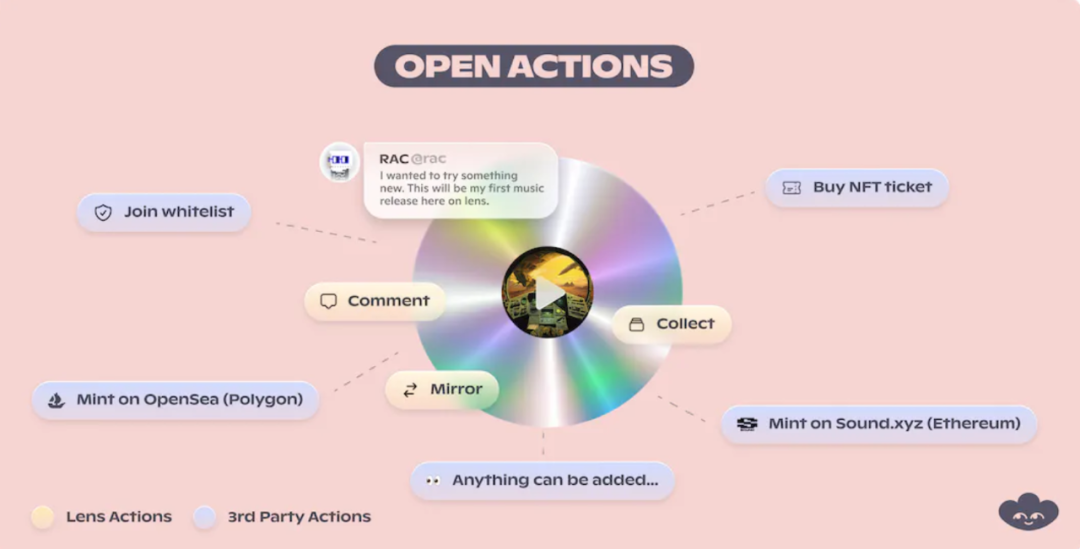 Lens is built around collecting, commenting, and mirroring
Lens is built around collecting, commenting, and mirroring
Other users can follow creators' pages to obtain Follow NFTs, and can also collect content published by creators to obtain Collect NFTs. Most of the users' social interaction behaviors will be preserved in the form of NFTs and stored on the blockchain, ensuring data ownership.
Thanks for providing the content. Here's the translation:
Thanks to the modular design of Lens and its open developer environment, the number of ecosystem products has already exceeded 100. Because of the composability of Lens Profile NFT, a greater variety of applications will bring more diverse user experiences. Users can also port their data to applications, including Lenstube, Lenster, Phaver, LensFrens, and others, which encompass social applications for music, videos, and visual content. Most Dapps operate similarly to mainstream Web2 social products, providing a smooth transition for users to experience new applications.
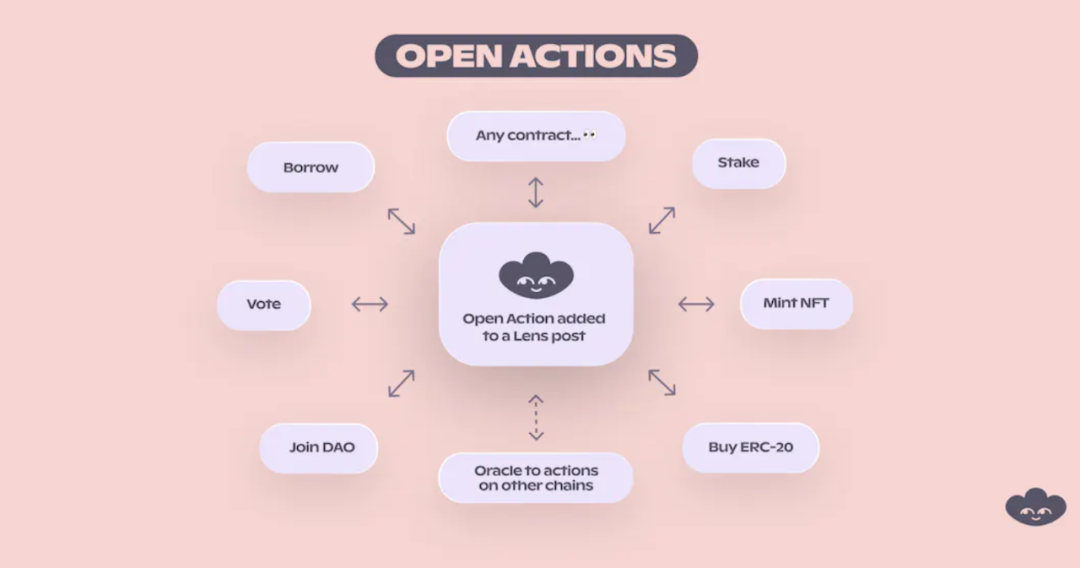 In addition to the above functions, more open operations will be available after the release of Lens V2, including: minting and purchasing NFTs, joining DAO organizations, making Gitcoin donations, and accepting paid DMs.
In addition to the above functions, more open operations will be available after the release of Lens V2, including: minting and purchasing NFTs, joining DAO organizations, making Gitcoin donations, and accepting paid DMs.
However, Lens Protocol still has certain limitations, such as the gas fees incurred for every operation and the restriction to the Polygon network. Additionally, due to Lens' desire to attract high-quality users in the early stages of the project, the open quota has been limited since the end of last year, with only about 100,000 Profile NFTs currently in circulation, making it a small circle game. This situation may improve with the upcoming release of Lens V2.
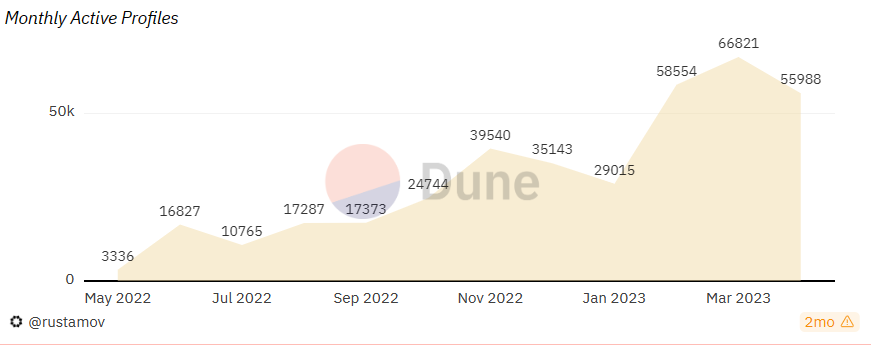
Although Lens currently only offers 100,000 Profile NFT qualifications, the monthly active users account for over half of the total addresses.
CyberConnect
CyberConnect is a decentralized social graph protocol and one of the leading players in the Web3 social interaction track.
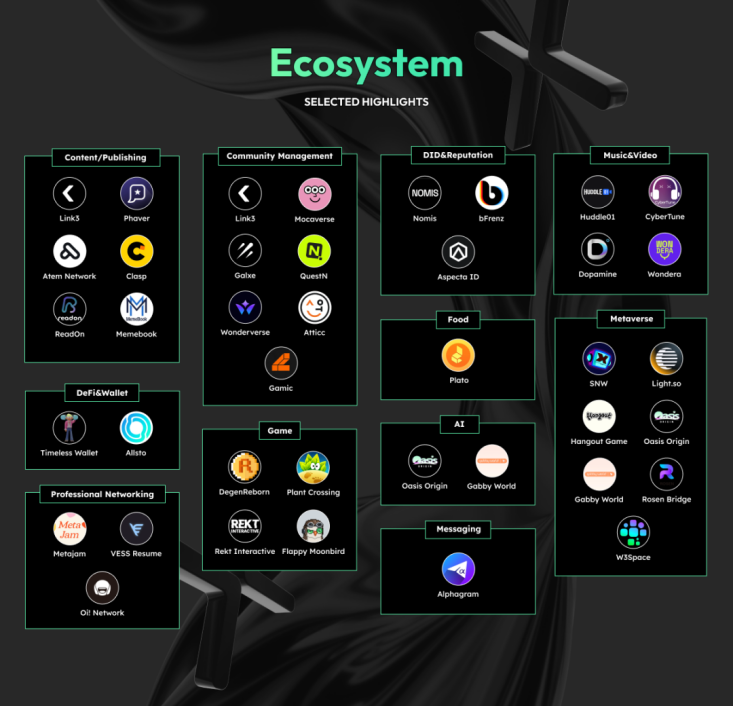
CyberConnect has three core components, including CyberProfile (decentralized digital identity), CyberConnect Social Graph (social relationship graph), and the CyberWallet.
Similar to Lens Protocol, CyberConnect is centered around returning interactive data to users, with the Profile NFT (cc Profile) as the core, helping users build a social graph. Its NFTs are composable and can freely flow within the ecosystem, and it has already integrated multiple high-quality applications such as Link3, Phaver, and ReadON. Link3, as the official application of CyberConnect, covers various functions such as social interaction, content publishing, community, and task posting, and is a focal point for user interaction.
When the CyberConnect protocol connects to different applications, it can directly bring user data to other applications, such as friend data, identity data, and whether to authorize data permissions, all depending on the user. However, some community members have raised concerns that CyberConnect displaying captured user data on personal interfaces poses certain privacy risks.
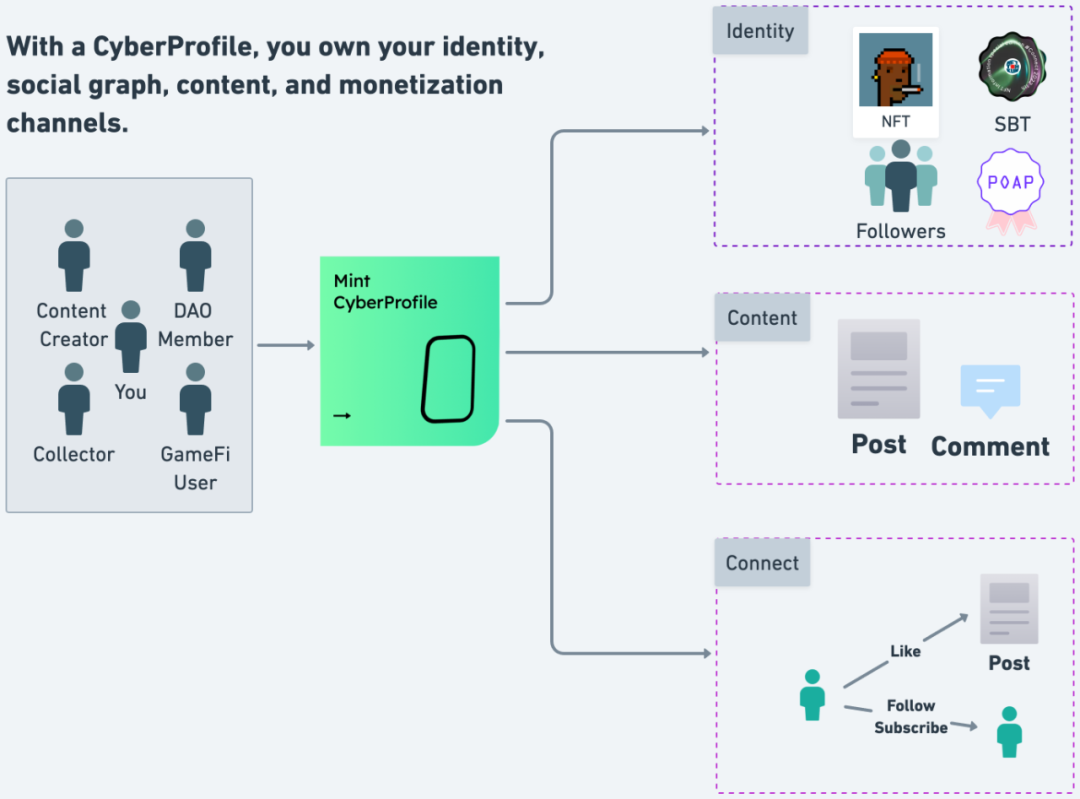
Users build their identity, publish content, and connect with other users around the CyberProfile NFT.
Unlike Lens Protocol, which can only be used on the Polygon network, CyberConnect has better scalability, supporting aggregation on multiple chains such as Ethereum, BSC, Solana, and Polygon. Furthermore, CyberConnect does not strictly restrict user access, and it now has over 1.2 million users registered for its Profile NFT, with active addresses accounting for 70% of the total addresses. However, after CyberConnect announced its token issuance plan, its activity and user registration have declined.
In addition to these two leading Web3 social infrastructure protocols, other Web3 social infrastructure such as Farcaster, Deso, and Nostr are also worth paying attention to.
3.2 Social Application Layer
Mirror
Mirror is an anti-censorship content creation platform launched by A16Z partner Denis Nazarov and is one of the mainstream platforms for content creation in the Web3 space. Mirror's core principle is "user-created, user-owned." Each time a creator publishes an article, it is minted as an NFT, and the created NFT is stored on the Optimism network and can be archived on Arweave for permanent storage.
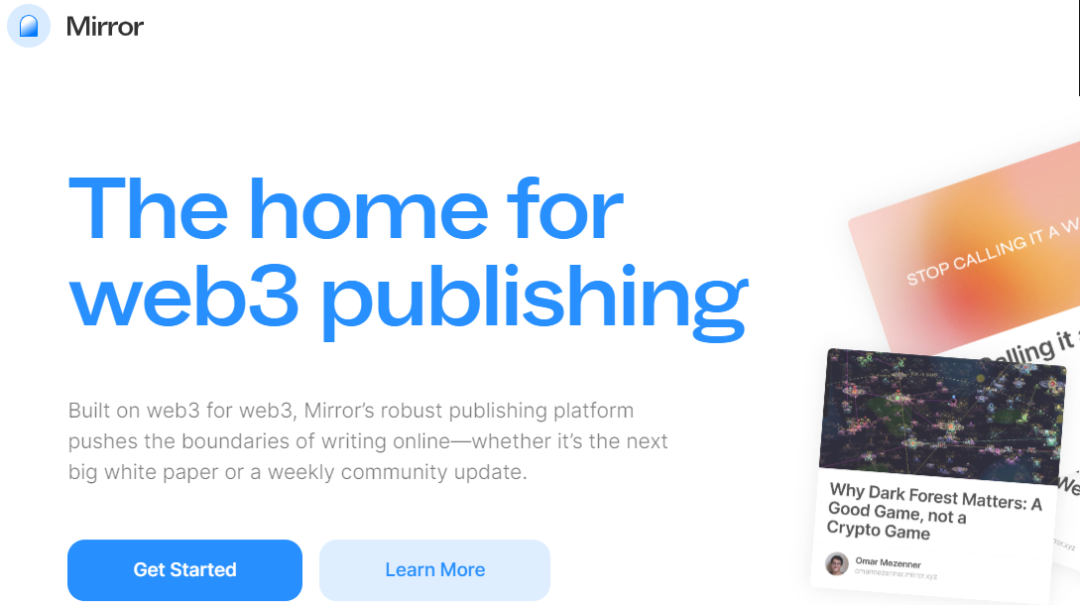
Creators can earn income on Mirror through crowdfunding, auctions, and collaborative contributions. However, Mirror also has some drawbacks for creators, such as a lack of content moderation, no guarantee of content accuracy, frequent bugs when editing articles, and inadequate resolution of copyright infringement through content plagiarism.
Debox
Debox is a Web3 social platform based on DID. Its interface is similar to WeChat, and its functions are similar to Discord and Twitter. Debox has the following main functions:
Chat: Users can chat directly in the community. Notably, Debox provides the option for asset holders to join groups, and only users holding the assets of the community can enter and rank based on their holdings, reducing the amount of irrelevant information to some extent.
Feeds: Similar to Twitter's feed, it can be divided into user-followed and recommended feeds, where users can post updates, comment, like, and collect posts.
Community: Debox divides the community into Token communities, NFT communities, and Clubs, and users can join communities based on their preferences.
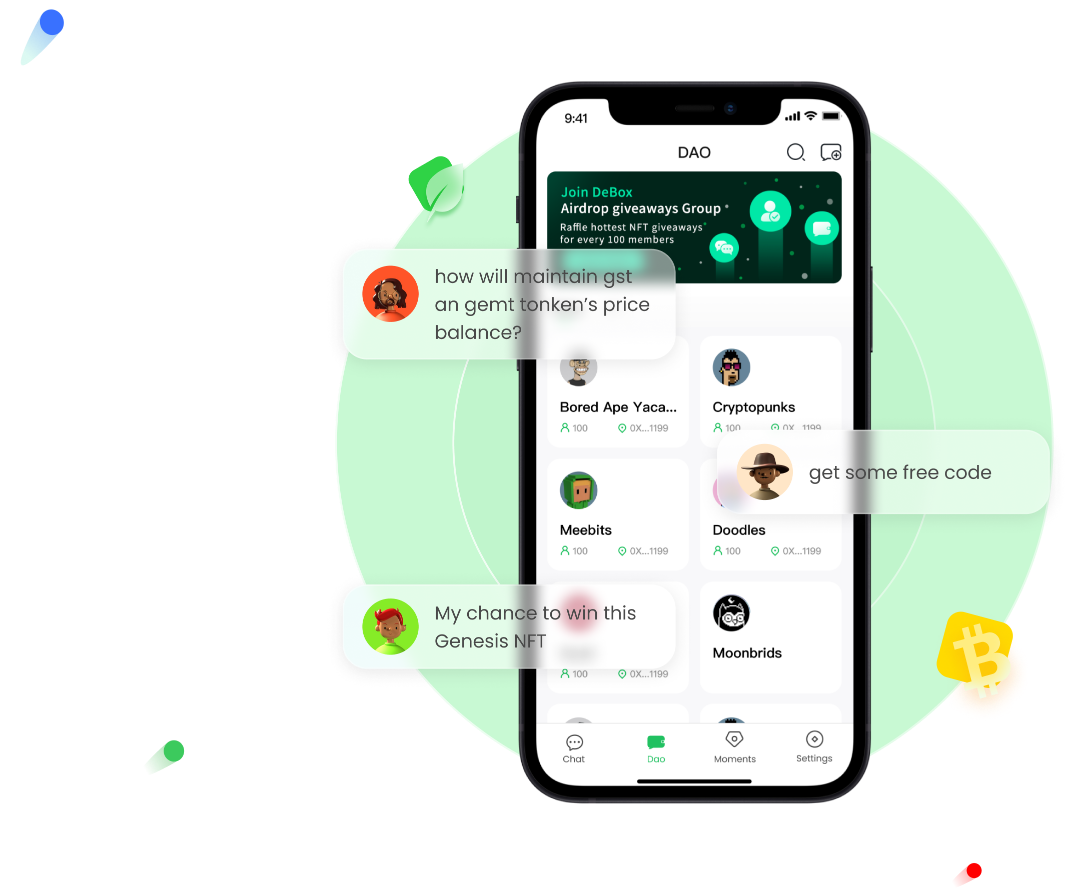
In addition, Debox also offers features such as unlimited group members, community management tools like voting and proposals, token authorization checks for users, and NFT trading, enhancing user convenience.
Damus
Damus is a social application created based on the decentralized social infrastructure protocol Nostr. Damus offers features such as notes (similar to Twitter's feed), direct messaging, notifications, and search, providing an experience similar to Twitter. When users create an account, they generate a public key and a private key for identity verification. Content creation does not require approval and carries no risk of deletion, making it resistant to censorship and fully owned by users.
With the endorsement of former Twitter CEO Jack Dorsey, Damus and Nostr gained significant attention within a few days of their launch. However, due to the lack of regulatory oversight, the platform soon became inundated with a large amount of borderline adult content and financial fraud, turning into a "social garbage dump."
4. Challenges of Web3 Social Interaction
4.1 Entry barriers limit new user influx
For a new Web3 user, there are two major barriers to entering Web3 social interaction.
On one hand, there is the wallet barrier. New users need to understand private keys, public keys, mnemonic phrases, and the significant differences in gas fees for native assets on different chains. However, with the increasing popularity of MPC or AA wallets, this barrier will gradually decrease.
On the other hand, there is the cognitive barrier. Compared to mainstream Web2 social applications, Web3 social interaction behaviors require gas fees and an understanding of a series of terms such as POAP, ENS, and NFT.
4.2 Lack of network effect applications in Web3 social interaction
Web3 social products have poor marketing effects and limited marketing capabilities. Even leading Web3 social protocols like Lens Protocol and CyberConnect face this issue. Lens Protocol has limited open registration and a small number of registrants, lacking a scale effect in community promotion. CyberConnect's excessive marketing activities have been criticized by the community for luring users to participate in "bottle cap picking" activities, resulting in poor reputation.
The habit of paying has not been formed. Most users are accustomed to using mainstream Web2 social products for free, and they do not understand the payment model of Web3 social products, which requires purchasing Profile NFTs and paying gas fees for interaction.
Most Web3 social applications blindly replicate the template of Web2 social platforms, without significant innovation. Without addressing significant pain points, these applications have limited appeal to most users or creators.
4.3 Strong user stickiness of Web2 social applications
Due to the first-mover advantage of traditional social media, Web2 social applications not only have a large user base but also have long-term active users.
For non-Web3 users, these users have already established mature relationship circles in Web2 social products. It is difficult for them to abandon their existing social capital and switch to unfamiliar products in Web3 social interaction.
For native Web3 users, without significant needs, they can meet their requirements using Web2 social applications such as Twitter, Discord, and Telegram.
However, for social products, the scarcity of users and creators will ultimately lead to insufficient vitality, which is fatal.
4.4 Lack of strong regulation to form good community norms
While Web3 social interaction allows for free speech and access to information, there are widespread concerns about whether it can form reasonable community norms and balance freedom and fairness without censorship oversight. Damus, a decentralized social media application strongly supported by former Twitter CEO Jack Dorsey, became a platform filled with a large amount of adult content and financial fraud shortly after its release due to the lack of regulatory oversight, turning into a "social garbage dump."
Although former U.S. President Trump was banned from major Web2 social media platforms such as Twitter and Facebook, the majority of people still support this move because his extreme nationalism and anti-intellectual speech did not continue to spread.
In most decentralized social platforms, the absence of censorship, lack of moral or legal standards, and the spread of junk content have become quite simple. Against the backdrop of rising global populism, nationalism, and extremist religious forces, teams or communities of Web3 social products need to correct mistakes in the post-truth era and take responsibility and provide methodologies for guiding various national customs, religious beliefs, and violent content.
5. SocialFi (X To Earn) is not the ultimate answer
The long-term success of Web2 social products does not solely rely on the WRITE TO EARN model to attract users, but also on the long-term presence of high-quality content. Although the X TO EARN model can incentivize user activity for a certain period, similar to most Gamefi projects, relying solely on the X TO EARN model does not have strong long-term sustainability appeal for users.
For example, the popular Socialfi project Monaco Planet in late 2021 led to a large number of accounts seeking token rewards for creating content, resulting in the generation of a large amount of invalid redundant information on the platform. This model exhibits strong Ponzi characteristics, and when the returns decrease, user activity significantly declines. In the competition among social media platforms, the lack of high-quality content is equivalent to losing the moat, which is currently lacking in decentralized social platforms and is why most Socialfi projects have short lifecycles and ultimately go unnoticed.
Innovations in product forms, from portal websites to social media platforms, have given rise to a new form of social product with each WebX social revolution. Web3 products should not be limited to adding financial attributes to the Web2 product model.
Build social products primarily based on niche vertical interests. Due to factors such as entry barriers and social scenarios, the opportunity for Web3 social products to become mainstream is far less than that of Web2 social products. However, they can try to target niche groups with differentiated interests, such as Chiliz, which targets sports fans, and Audius, which gathers music enthusiasts.
Attracting high-quality content creators and users, whether in Web2 or Web3, requires long-term accumulation of quantity and quality of users and creators.
Additionally, there is a need to prioritize mobile development. There is a high demand for social mobile applications in the market, but most Web3 social products are developed for web platforms, neglecting the demand for vertical screen orientation.
According to Triple-A data, there are approximately 420 million cryptocurrency users, accounting for less than 5% of the global population, a small fraction compared to the global population of Web2 social users. Even for top protocols like Cyberconnect, the user base remains around 1 million, and a considerable portion consists of multiple accounts created in anticipation of airdrops. In the social interaction track, the user base of top protocols is still in its infancy, and in the "fat protocol, thin application" Web3 environment, the emergence of killer-level social applications is even more challenging. From the current situation, the likelihood of Web3 social interaction carving out a niche in the social track is greater.
免责声明:本文章仅代表作者个人观点,不代表本平台的立场和观点。本文章仅供信息分享,不构成对任何人的任何投资建议。用户与作者之间的任何争议,与本平台无关。如网页中刊载的文章或图片涉及侵权,请提供相关的权利证明和身份证明发送邮件到support@aicoin.com,本平台相关工作人员将会进行核查。



